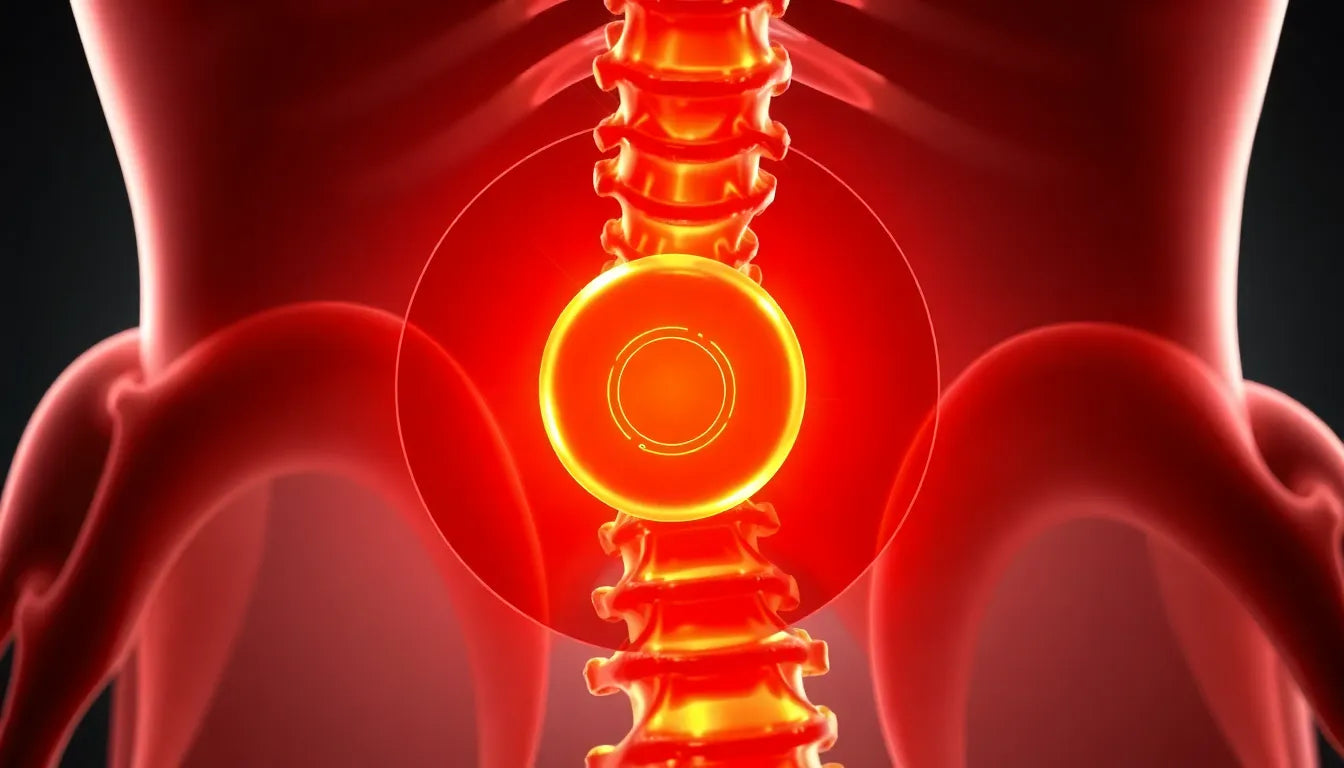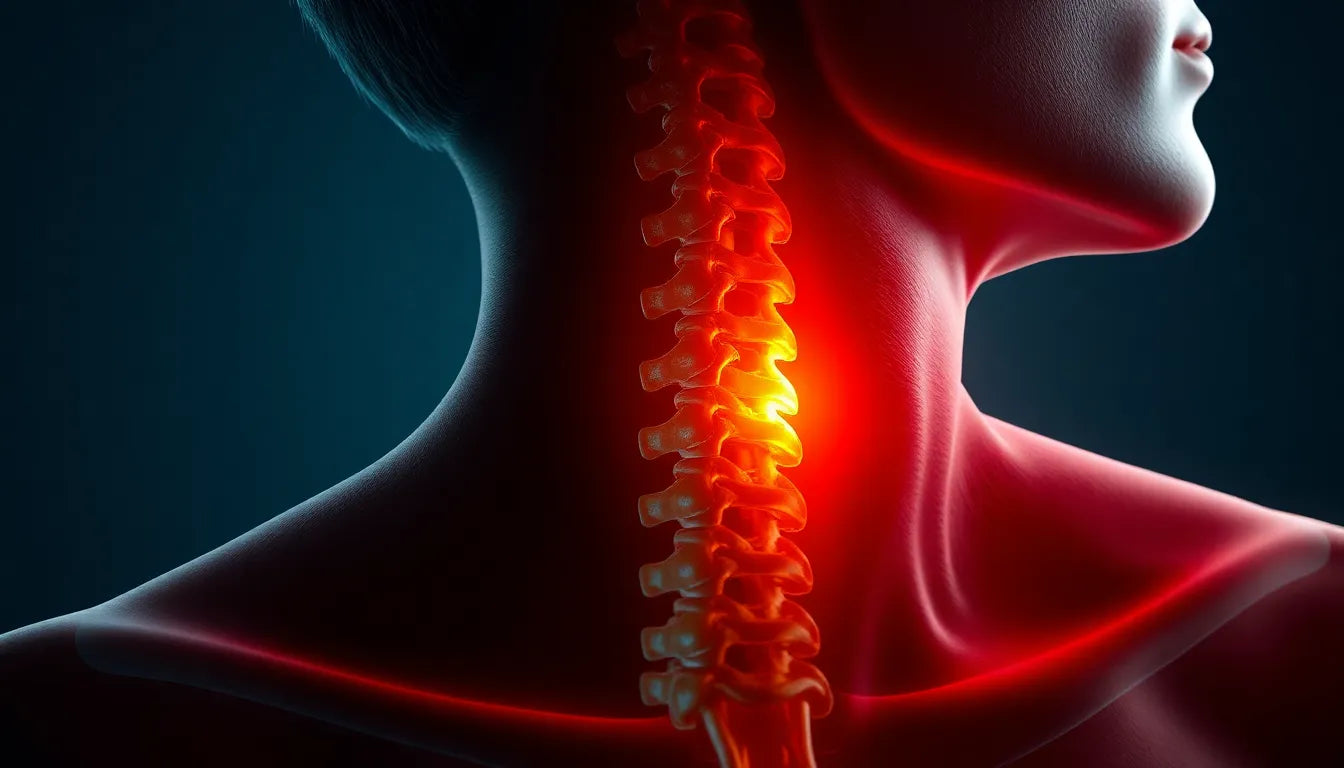Understanding lumbar spondylosis is essential for anyone experiencing persistent lower back pain or mobility challenges. This common degenerative condition affects the lower spine, often leading to discomfort and a decrease in quality of life. As a condition that becomes more prevalent with age, lumbar spondylosis is particularly widespread among older adults, making awareness and understanding crucial for effective management.
Characterized by the wear and tear of the spinal discs and joints, lumbar spondylosis can significantly impact daily activities. The chronic pain associated with this condition can range from mild to severe, often leading to limitations in mobility and a reduced ability to perform everyday tasks. For many, this means adjusting lifestyle habits and seeking medical advice to manage symptoms effectively.
The purpose of this post
The aim of this blog post is to provide comprehensive information about lumbar spondylosis, helping you understand the condition better and explore ways to manage it. By shedding light on the symptoms, causes, and available treatment options, we hope to empower readers with the knowledge needed to take proactive steps toward relief and improved quality of life.
Finding effective management and relief strategies is crucial for anyone dealing with lumbar spondylosis. Through this post, we will guide you through the complexities of the condition, offering insights into both non-surgical and surgical treatment options, as well as lifestyle adjustments that can help alleviate symptoms. Our goal is to support you on your journey to a pain-free life, providing practical advice and fostering a better understanding of how to live well with lumbar spondylosis.
Stay tuned as we delve deeper into the specifics of lumbar spondylosis, exploring its symptoms, diagnostic procedures, and the various approaches to treatment. Whether you're newly diagnosed or have been managing the condition for some time, this post aims to offer valuable insights and support as you navigate your path to relief.
what is lumbar spondylosis?
At its core, lumbar spondylosis refers to the degenerative changes occurring in the lower spine. These changes primarily involve the intervertebral discs and facet joints, leading to a gradual deterioration of the spine's structural integrity. As the discs lose hydration and elasticity, they become less effective in absorbing shock, contributing to the wear and tear of the vertebrae. This degeneration can result in the formation of bone spurs and narrowing of the spinal canal, conditions that are often associated with lumbar spondylosis.
The causes of lumbar spondylosis are multifactorial, with aging being the most significant risk factor. As individuals age, the cumulative effects of daily physical activities and minor injuries contribute to the spine's degeneration. Genetic predisposition also plays a role, as some people may inherit traits that make their spinal discs more susceptible to degeneration. Additionally, lifestyle factors such as poor posture, obesity, and lack of physical activity can exacerbate the condition, accelerating the degenerative process.
clinical presentation and symptoms
Understanding the symptoms of lumbar spondylosis is crucial for early diagnosis and effective management. The condition often manifests as axial spine pain, a persistent ache in the lower back that can vary in intensity. This pain is typically exacerbated by prolonged sitting or standing and may improve with rest or changes in position.
In addition to axial pain, individuals with lumbar spondylosis may experience leg pain and numbness, symptoms that arise when nerve roots are compressed by degenerative changes in the spine. This can lead to a condition known as radiculopathy, where pain radiates down the legs, often accompanied by tingling or numbness. In severe cases, motor weakness may occur, affecting the ability to perform everyday tasks like walking or lifting objects.
These symptoms are often linked to other spinal conditions, such as spinal stenosis, which involves the narrowing of the spinal canal, or disk herniation, where the inner material of a spinal disc protrudes through its outer layer. Spondylolisthesis, a condition where one vertebra slips over the one below it, can also be a consequence of lumbar spondylosis, further complicating the clinical picture.
diagnostic procedures
Accurate diagnosis of lumbar spondylosis involves a combination of clinical evaluation and imaging studies. Magnetic Resonance Imaging (MRI) is a preferred diagnostic tool as it provides detailed images of the spine's soft tissues, including discs and nerve roots. This allows for the assessment of any compressive effects on the nerves and the degree of degeneration.
Computed Tomography (CT) scans offer cross-sectional views of the spine, providing detailed images of the bone structures. This is particularly useful for detecting bone spurs or identifying the extent of vertebral degeneration. X-rays, while less detailed than MRI or CT scans, are still valuable for visualizing the bone structures and detecting degenerative changes such as osteophyte formation or vertebral misalignment.
treatment approaches
The management of lumbar spondylosis often begins with non-surgical treatment options. Physical therapy is a cornerstone of conservative management, focusing on exercises that strengthen the back muscles and improve flexibility and mobility. A well-structured physical therapy program can significantly alleviate pain and enhance the quality of life for individuals with lumbar spondylosis.
Lifestyle modifications are equally important. Weight management through a balanced diet and regular exercise helps reduce the load on the spine, potentially slowing the degenerative process. Ergonomic adjustments, such as using supportive seating and maintaining proper posture, can also alleviate symptoms and prevent further strain on the lower back.
For those with severe symptoms that do not respond to conservative measures, surgical interventions may be considered. Surgical options vary depending on the specific condition and severity, but they aim to relieve nerve compression and stabilize the spine. Common procedures include decompression surgeries, such as laminectomy, or spinal fusion, which involves joining two or more vertebrae to prevent movement and alleviate pain. While surgery can offer significant relief, it is essential to discuss potential outcomes and recovery expectations with a healthcare provider to ensure the best possible results.
Self-management and lifestyle adjustments
Managing lumbar spondylosis effectively often involves a combination of professional treatment and self-care strategies. At home, individuals can adopt several practices to alleviate symptoms and improve their quality of life. Regular exercise is crucial, with routines focusing on flexibility and core strength to support the spine and reduce pain. Activities such as yoga or Pilates can be particularly beneficial, as they emphasize stretching and strengthening the back muscles.
Pain management techniques, such as hot and cold therapy, can provide significant relief. Applying a hot compress can help relax tight muscles, while a cold pack can reduce inflammation and numb sharp pain. Over-the-counter medications, like nonsteroidal anti-inflammatory drugs (NSAIDs), may also be used to manage discomfort, but it's important to consult with a healthcare provider before starting any medication regimen.
Maintaining a healthy weight is another critical aspect of managing lumbar spondylosis. Excess weight can place additional strain on the spine, exacerbating symptoms. A balanced diet, combined with regular physical activity, can help achieve and maintain a healthy weight. Additionally, paying attention to posture, both while sitting and standing, can prevent further stress on the lower back.
Patient experiences and success stories
Many individuals living with lumbar spondylosis have found success in managing their condition through a combination of medical treatment and lifestyle changes. For example, Jane, a 65-year-old retiree, credits her improved mobility and reduced pain to a tailored exercise program and ergonomic adjustments in her home. She emphasizes the importance of a positive mindset and staying proactive in health management.
Similarly, Tom, a 50-year-old office worker, shares how incorporating regular breaks to stretch during his workday and using a supportive chair has significantly alleviated his symptoms. These stories highlight that while lumbar spondylosis can be challenging, adopting a comprehensive management plan can lead to substantial improvements in daily life.
Frequently asked questions
What is the difference between lumbar spondylosis and other spinal conditions?
While lumbar spondylosis involves degenerative changes in the lower spine, it differs from other conditions like arthritis and osteoporosis. Arthritis refers to inflammation of the joints, which can occur in any joint, including the spine. Osteoporosis, on the other hand, is characterized by weakened bones and an increased risk of fractures. Lumbar spondylosis specifically involves degeneration of the spinal discs and joints in the lower back.
Can lumbar spondylosis be prevented?
While aging is an unavoidable risk factor, certain lifestyle changes can help reduce the risk of developing lumbar spondylosis. Regular exercise, maintaining a healthy weight, and practicing good posture can all contribute to spinal health. Ergonomic practices, such as using supportive seating and avoiding prolonged periods of sitting or standing, can also be beneficial.
When should I see a doctor for lumbar spondylosis?
If you experience persistent back pain, leg pain, numbness, or weakness that interferes with your daily activities, it is advisable to seek medical advice. Early diagnosis and treatment can help prevent the progression of symptoms and improve your quality of life.
Are there alternative therapies for lumbar spondylosis?
Yes, several complementary therapies may provide relief for lumbar spondylosis. Acupuncture, chiropractic care, and massage therapy are popular options that some individuals find helpful. However, it is important to discuss these therapies with a healthcare provider to ensure they are appropriate for your specific condition.
What is the prognosis for someone with lumbar spondylosis?
With appropriate management, many individuals with lumbar spondylosis can lead active, fulfilling lives. While the condition is chronic, symptoms can often be controlled through a combination of medical treatment, lifestyle changes, and self-care strategies. Long-term management focuses on maintaining mobility and minimizing pain to enhance quality of life.


















